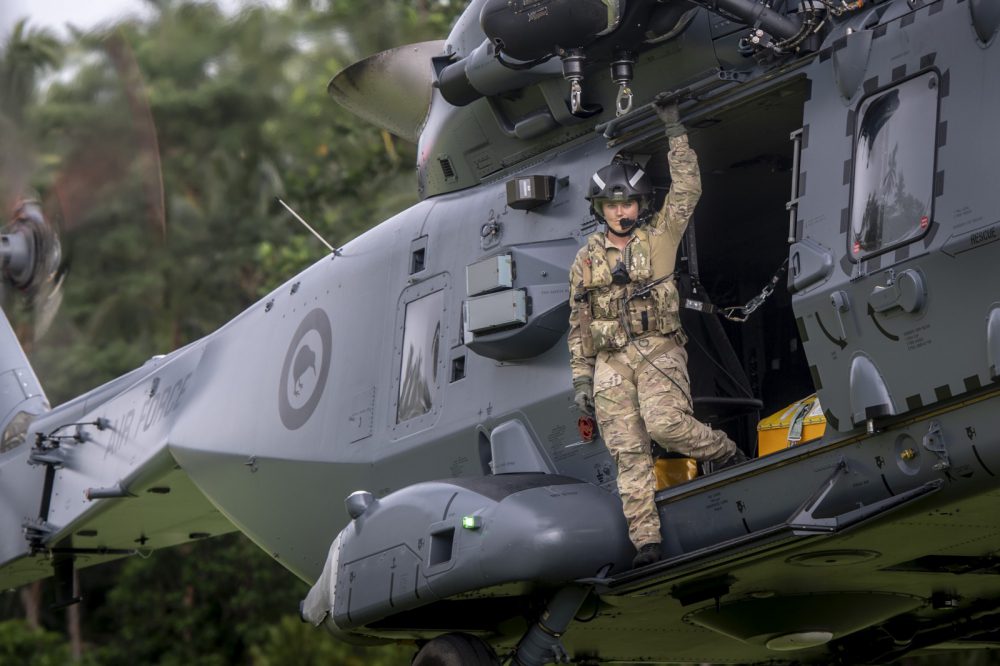
New Zealand’s Defence capability plan 2019 (DCP ’19), released last week, lays out ways to spend the NZ$20 billion pledged to defence by the coalition government early in its tenure. It clearly knits together future purchases and expenditure with the policy priorities set out in the preceding Strategic defence policy statement 2018 (SDPS). For the most part, DCP ’19 is a compelling document, but some questions remain.
The SDPS, from which the DCP ’19 takes its strategic direction, was unprecedentedly political. It noted some concerns with new and old defence partners, but also reinforced some well-worn tropes. It reiterated a commitment to engagement with Australia and, perhaps most significantly, emphasised that engagement in the Pacific is non-discretionary—that is, responses to events in our near north are to be given the same status as responses in our domestic jurisdiction. It emphasised the need to protect Antarctica, to contribute to a rules-based order and to deal with complex disrupters such as climate change and rising populism.
Much of the discussion about the role the NZ Defence Force could play in supporting the statement was based on a framework that clarified some key principles (including ensuring that the NZDF is ‘combat capable’) and that emphasised the NZDF’s non-military roles. A brief summary of the SDPS is in chapters 2 and 3 of the DCP ’19, alongside mention of the government’s ‘Pacific reset’. Chapter 4 also expressly recognises the 2018 Climate crisis: defence readiness and responsibilities assessment.
The DCP ’19 explicitly sets out to identify how defence spending will seek to meet these policy objectives. For example, like the earlier decision to buy P-8 Poseidons to replace the ageing P-3 Orion fleet, the suggested purchase of new Super Hercules aircraft to replace the air force’s current C-130 workhorses can easily be justified by the need for continuing high interoperability with Australia and by likely NZDF responses in the Pacific. The new C-130Js will bring better overall performance, 30% larger payloads and superior performance when operating into small Pacific island runways.
Suggested new naval purchases also contribute to these broader strategic objectives. HMNZS Canterbury’s sea-state ratings for landing craft operations are limited, so a new landing platform dock that has a greater cargo capacity, can cope with rougher seas, has a shallow draught and has improved self-protection capability would improve potential contributions in the Pacific. The DCP ’19 also suggests that a second ship with similar capabilities could be delivered when the Canterbury is replaced in the mid-2030s, helping to provide for concurrency—that is, the ability of the NZDF to respond to more than one incident at a time. A new ice-strengthened patrol vessel would help to free up other vessels to deploy in the Pacific, cope better with the 20-metre waves in the Southern Ocean, and thus also contribute to a third policy principle outlined in the 2018 statement—that of protecting Antarctica.
The SDPS’s expanded geographical focus, including a more explicit commitment to an area of operations stretching from Antarctica to the equator, involves two new domains: space and cyber. The DCP ’19 wraps together some of these areas of concern under the rubric of an ‘information domain’. Infographic material accompanying the plan summarises suggested key investments and time frames in the traditional maritime, land and air domains and now the information domain. Much of it remains a little speculative, including the NZDF’s options for future satellite communications.
However, so far, so good. Much of the DCP ’19 is looking to replace like with like or to extend capabilities in areas where a need has been identified, such as for naval vessels more able to operate in heavy seas. Yet one change, in particular, stands out.
Increasing the regular army to 6,000 personnel by 2035 is a large, ongoing commitment. The need for concurrency is one rationale for such growth. The suggestion that operations in East Timor demonstrated limitations on fielding more than two combat-capable battalions for rotation is another. The idea is that this growth could enable a third rotation, bulking out any major land operation so that it can be sustained more easily over a longer period without redeploying spent troops. The idea thus far had been that a third battalion could be provided for through the judicious development and deployment of other army specialist corps and reservists, or perhaps through international cooperation.
So why the growth in regular personnel numbers now? It may be because planners believe this provides a more flexible response both by having more troops capable of functioning in hostile environments and for reasons of concurrency.
However, along with questions about other possible force structures and how to occupy larger numbers of undeployed personnel, one issue that must be addressed is the need to increase diversity. In the field of gender diversity and security, researchers have demonstrated the value of deploying women and using a gender perspective in planning and executing operations.
Moreover, in the new ‘information domain’, it’s clear that diversity is particularly valuable when gathering and analysing intelligence. Yet the NZDF is currently struggling to increase diversity across the board. Despite concerted efforts to increase the number of women, the number in uniform in the NZDF hasn’t increased significantly, moving only from 17% in 2009 to 15.7% in 2013 and to 18.8% in 2018.
And the shift to a large standing regular force potentially diminishes the Army Reserve, which is one of the current sources of diversity in the NZDF. One of the rationales for the reservist route is the varied and strong skill sets that reservists bring to the institution, which are potentially particularly valuable in stabilisation operations (a significant portion have graduate qualifications). The enduring challenge of getting the right people and training them for the right contingencies is therefore the key issue raised by the DCP ’19 and will need the closest consideration.

